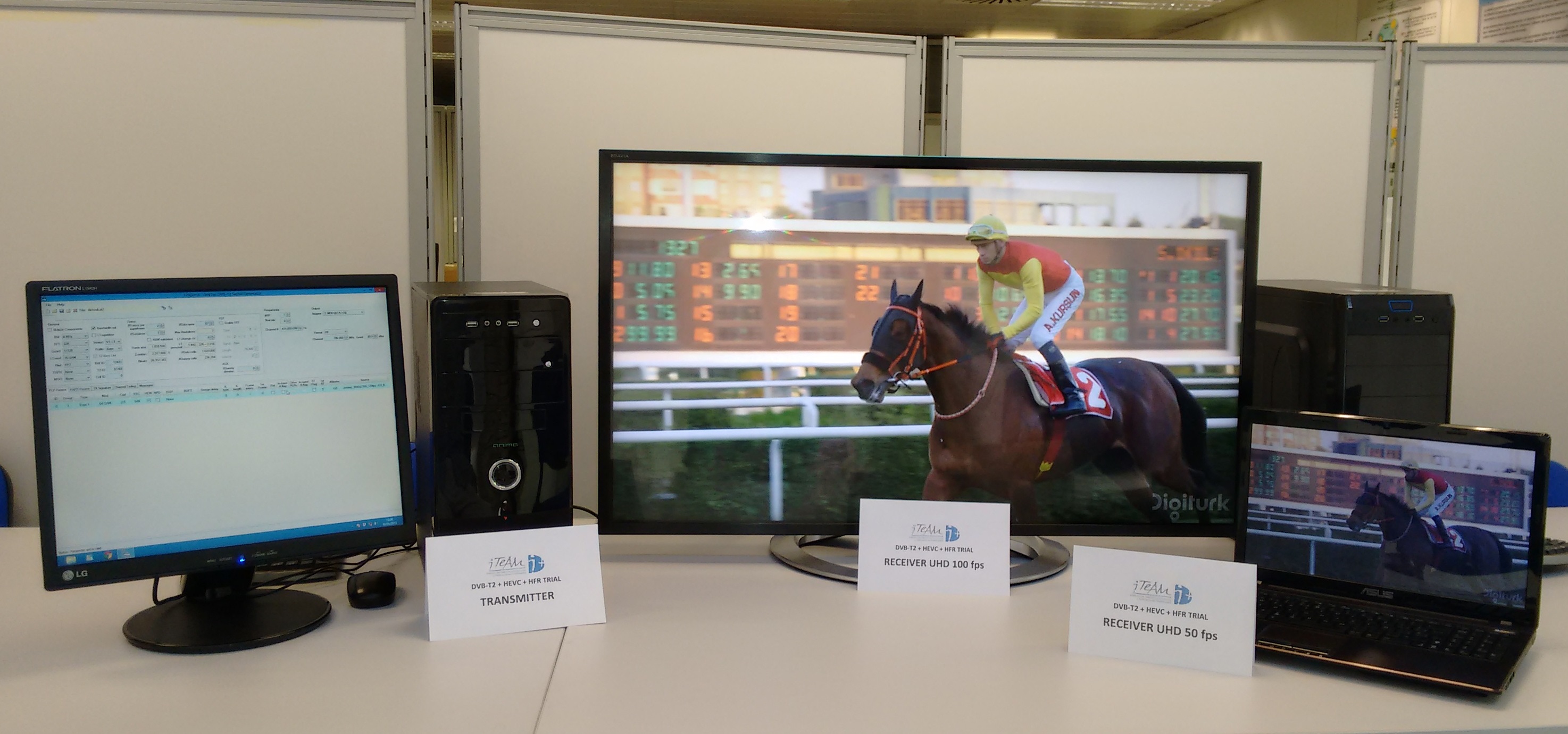Researches of the Mobile Communications Group (MCG) of the Institute of Telecommunications and Multimedia Applications (iTEAM) of the Universitat Politècnica de València in Spain, have carried out the first transmission trials using the DVB-T2, and the Ultra High Definition format known as “UHD-1 Phase-2”, nowadays under study within the DVB Commercial Module.
The novelty of this trial is the use of Higher Frame Rate (HFR) with temporal scalability of 50fps and 100fps. Scientific studies conducted by the BBC, ITU and EBU, have concluded that for large screens, a temporal resolution of 50/60 fps can cause problems for motion portrayal, such as flicker, motion blur, and jerkiness. So a higher resolution demands also higher temporal resolution.
However, the high bitrates needed for the encoding of such HFR formats can be an issue for devices with limited computation capability, such as tabs or smartphones. For this reason, the temporal scalability encoding can arise as a reasonable and helpful solution for these scenarios.
The temporal scalability is already included in HEVC Version 1, with a sub-layer concept very similar to the temporal level concept in the scalable extension of H.264, denoted as SVC (Scalable Video Coding). This feature allows a simple backwards compatibility for the “UHD-1 Phase-1” IRD, being able to decode the lower temporal resolution of 50/60fps by discarding all NAL units with temporal sub-layer larger than zero, from a 100/120fps bit stream. Other approaches for backward compatibility can be implemented, such as the use of different PIDs for different temporal layers.
In the trial, the 3840×2160 sequences were encoded using a HEVC Level 5.2 with a bit rate of 20Mbps and a GOP structure of 8 frames. The service was delivered by means of the DVB-T2 standard using the mode 8 MHz 16K 1/16 PP2 64QAM 2/3 which enables error-free reception at C/N 13.5 dB in AWGN channel.

